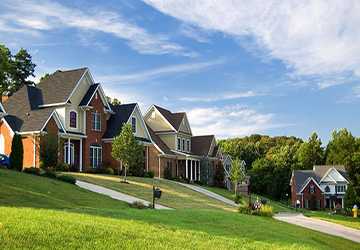Tips for Finding the Perfect Neighborhood for Your Family
Choosing the right neighborhood is critical to your family’s happiness and your home’s value. Consider these factors when searching for your ideal area.
Prioritize Convenience
A convenient location saves time running errands and commuting. Look for proximity to:
● Jobs, schools, daycare
● Grocery stores, pharmacies, doctors
● Parks, trails, recreation centers
● Restaurants, shopping, entertainment
● Public transit access, if needed
Map out drive times during rush hour. Can you quickly get to key places?

Evaluate Schools
Research school options if you have kids:
● Look up test scores, class sizes, rating sites.
● Visit schools and meet teachers if possible.
● Talk to neighbors about the district.
● Consider public, private, charter, magnet options.
● Factor in childcare and preschools too.
Good schools have higher resale value even if you don’t have kids.
Assess Safety
A safe area provides peace of mind. Check:
● Police reports and crime rates. Is there more petty theft or severe crime?
● Presence of street lights, sidewalks, crosswalks.
● Neighborhood watch groups and patrols.
● Location of registered sex offenders.
● Walk or drive the area after dark to observe the activity.
Determine Housing Stock
Ideally, choose an area with:
● Home styles and sizes similar to what you need.
● Well-maintained properties indicating pride of ownership.
● A balance of renovated homes and opportunity to improve dated homes.
The diversity of housing prices can support values long-term.
Talk to Current Residents
Reach out to neighbors to learn the pros and cons of the area:
● Are people friendly? Is it easy to meet people?
● Are yards and noise levels respectable?
● Are the streets relatively peaceful and safe?
● Do people plan to stay in the neighborhood long-term?
Positive resident feedback is a good sign.

Research Growth Potential
Buy in an area poised for appreciation:
● Review population and job growth projections. In-demand areas see construction and new businesses.
● Drive around and look for signs of investment - new construction, renovated commercial areas, infrastructure upgrades.
Stable or growing neighborhoods hold value better in market downturns.
Evaluate Livability
Picture your day-to-day lifestyle:
● Are the yards and homes well-maintained? Poorly maintained properties bring down the value.
● Does the area feel charming? Are there sidewalks, mature trees, greenspaces? Character holds appeal long-term.
● Is it pedestrian and bike-friendly? Families enjoy walkable areas.
Check Environmental Factors
Be aware of:
● Flight paths from nearby airports causing noise.
● Power plants, waste treatment facilities, or industrial zones impacting air quality or water.
● Flood zones, sinkholes, or other geographic risks.
● Freeway proximity causes noise or reduced air quality.
Conclusion
Take time to analyze neighborhoods before committing, considering convenience, schools, safety, housing stock, livability, and growth potential. Visit at varied times and talk to residents. Finding the optimal community for your family’s needs will enhance your enjoyment and investment in your home.





